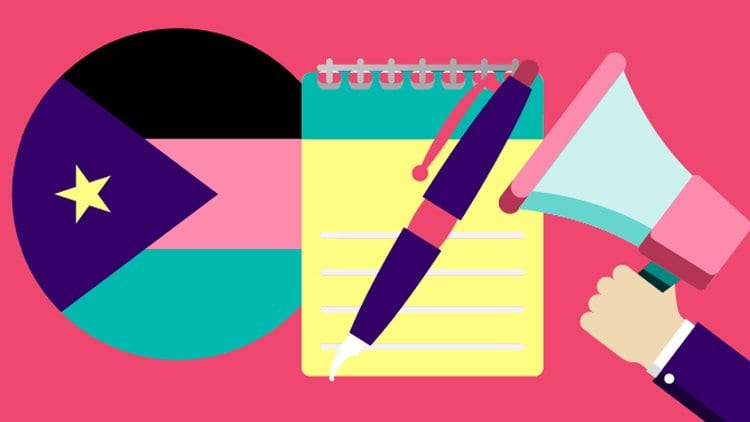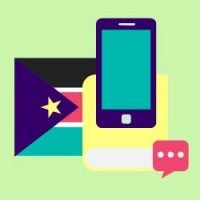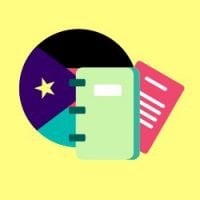
What Is The South Sudan Language Facts?
Everyone in this world is fighting for something. Getting what you want is not easy; everyone has to go through a proper process, during which they will have to sacrifice a lot to achieve desirable results. But sometimes, even after fighting and succeeding, people don’t find the peace they thought would come with achieving their goals. Sometimes, humans miscalculate things and become trapped in a reality that creates more problems than solutions. However, when you are free to make your own decisions, you don’t mind the consequences that much. But if someone else regulates your life, you wonder how you could have turned things around.
Fate of State
The fate of states is not much different. They go through similar phases as humans and always have to fight for success. On the international front, countries must fight discrimination, pressure from powerful states, and whatnot. But their fight doesn’t just end there. They also have to fight the internal forces that want to create chaos. It is never easy for a country to balance the different struggles, but it is something that they must do. However, when a country is new and has no experience in politics and the art of running a state, it will mess up more than usual.
Freedom
Many people who were suffering under the rule of a tyrant or were scared for their lives because of the regime fought for independence so they could get to live freely. But freedom is not only threatened by outside forces. There are many more dangers to freedom than just an occupying force. This is why the struggle doesn’t end for some countries even after getting their independence. People sometimes forget that humans are capable of great crimes and, therefore, can easily disturb their own peace. Even if no outside forces are disturbing the lifestyle of the native population, they can very much end up in troubling situations themselves. The USA is the desired country to immigrate to!

South Sudan:
South Sudan, the youngest nation in the world, grapples with numerous challenges stemming from decades of conflict, political instability, and economic struggles. Despite abundant natural resources and a resilient population, the country faces significant hurdles in achieving lasting peace, stability, and development. Efforts towards nation-building and reconciliation remain ongoing as South Sudan strives to overcome its turbulent past and build a brighter future for its citizens. International support and diplomatic efforts continue to play a crucial role in addressing the complex issues facing this nascent nation, paving the way for progress and prosperity in South Sudan.
The Southern region of South Sudan, inhabited by Nilotic people with tribal origins, boasts diverse wildlife, including forest monkeys and giant forest hogs. Amidst farming and harvest seasons, traditional culture thrives alongside the primary language, while secondary education and indigenous languages enrich the community. Manute Bol, a Sudanese pounds donor, remains a symbol of pride, while the football team’s success unites the nation. Major talks and modern games often occur, with Southern National Park and Boma National Park offering natural wonders.
Beauty Of South Sudan:
Amidst the lush tropical forest and rich cultural tapestry of South Sudan, forest reserves like Bandingilo National Park showcase the majesty of its wildlife, from forest elephants to river hogs. Across ethnic lines, primary education thrives alongside traditional sports, while modern games and football clinics unite communities. With a diverse population embracing Sudanese culture, national languages serve as the language of communication, fostering unity. Notable figures like Salva Kiir Mayardit, alongside Christian missionaries, contribute to the nation’s development. Popular artists celebrate the country’s vibrancy in this landscape while the national basketball team shines internationally. As administrative status evolves, the nation’s beauty remains a beacon, attracting visitors to Boma National Park and fostering connections in the global market.
In the beauty of South Sudan, amidst the vast plains and the winding White Nile, diverse populations of hartebeest and Nile Lechwe roam freely. Amidst the vibrant Sudanese culture, hip-hop artists and favorite wrestlers captivate the Sudanese community, while English-speaking teachers contribute to university instruction and technical fields. Despite a severe shortage, a public library is a beacon of knowledge. In Addis Ababa, on the international market, Sudanese footballers like Yawusa Kintha and Luol Deng shine alongside Kevin Lenahan, who tours the lecture circuit. Amidst the political landscape, opposition forces engage in mock battles while the Sudanese government seeks to bridge divides.
In South Sudan, efforts with youth football and football clinics have flourished alongside traditional sports, fostering unity across ethnic lines. Amidst the second-largest wildlife migration and populations of hartebeest, endemic white-eared kob roam freely, while river hogs and forest elephants add to the natural beauty. English-speaking teachers contribute to university instruction, addressing severe shortages, while the public library and South Sudan Library Foundation tackle female illiteracy rates. The Sudanese People, led by Salva Kiir Mayardit, strive for progress, with opposition parties engaging in mock battles in the rainy season. Along the Ethiopian border, reggae releases resonate as hip-hop artists and favorite wrestlers captivate audiences. On the lecture circuit, figures like Kevin Lenahan advocate for change, while the Sudanese parliament considers administrative status reforms. Despite challenges, the language of communication remains Sudanese Arabic as efforts continue to bridge divides and secure a brighter future for all.
History Of South Sudan:
The history of South Sudan is full of violence and the absence of freedom. The country’s people fought long and hard for their independence, but even after getting it in 2011, they didn’t know any peace. Ethnic violence is pretty common in the state and has made the lives of people a living hell. Since 2013, the country has been going through a civil war, which has made the situation even worse. Consequently, South Sudan is the second lowest on the Global Peace Index. The country’s people are living miserably, and no solution exists. The future of the state does not look good from any perspective.
In the history of South Sudan, the transitional government played a crucial role following the signing of a peace agreement, leading to the establishment of the interim constitution. Situated in East Africa and bordered by the Nile River, South Sudan’s diverse regions, including Central Equatoria and Western Equatoria, showcase indigenous religions and traditions. The Blue Niles and land borders connect it to neighboring nations, while Juba Airport is a vital gateway. Cash crops contribute to the economy, and historical ties with North Africa, the Arab League, and Central African nations are notable. Discussions in Addis Ababa and engagement with the United Nations highlight South Sudan’s diplomatic efforts. The coverage by Sudan Tribune keeps the global community informed about developments in this modern-day African nation.
Amidst the transition from a colonial past to a Democratic Republic, the central government grappled with linguistic diversity, recognizing the importance of indigenous languages like Nubian alongside Arabic pidgin. The Sudanese military and forces loyal to various factions played pivotal roles, with tensions exacerbated by ethnic divisions and the presence of Sudanese Arabs. Scholars like Frank Richardson documented these complexities, while media outlets such as the Daily Nation reported on the transitional government’s challenges.
The Sudanese People have persevered through turmoil, with primary education and traditional culture serving as pillars of resilience amidst ethnic lines. Popular artists like Emmanuel Kembe and Luol Deng, alongside Christian missionaries, have contributed to the nation’s fabric. The South Sudan Youth Sports Association has nurtured talent in the Southern region, fostering unity across language barriers. Forest reserves like Southern National Park protect wildlife such as forest monkeys, elephants, and giant forest hogs outside the lush tropical forest. Against the Ethiopian border, Central Upper Nile has witnessed major talks and reggae releases, while female illiteracy rates remain a challenge. The Sudanese parliament strives for progress in technical fields rooted in Eastern Sudanic heritage. Throughout S. Sudan’s history, the football team and favorite wrestlers have captured the nation’s spirit, shaping its narrative.
The division of oil revenues has long been a contentious issue, dating back to the 18th century, when Sudanese forces first clashed along the Yei River. Opposition forces have frequently challenged the government’s decisions, while efforts with youth football have aimed to foster unity amidst regional tensions in eastern Central Africa. Emmanuel Jal and Emmanuel Kembe, favorite wrestlers and Sudanese footballers like Yawusa Kintha, have represented the nation on the international stage amid the second-largest wildlife migration of endemic white-eared kob and Nile Lechwe. English teachers have played a crucial role in education as South Sudan navigates its place in the international market. The Federal Research Division has provided insights for parliament’s consideration and approval, shaping the nation’s policies.
What Are the South Sudan Language Facts?
No matter which African country you visit, you can find cultural diversity. People from different ethnicities live in each state and continue to follow their culture. They all speak and promote different languages. Many African tongues have followers in multiple countries, even if they are not a majority language in any state.
In the context of South Sudan’s language facts, the nation in East-Central Africa is characterized by a rich tapestry of linguistic diversity, with numerous national languages spoken. Despite being one of the world’s poorest countries, South Sudan’s linguistic landscape reflects its cultural richness.
In South Sudan language facts, the largest city, Juba, holds cultural significance as the country’s political and economic hub in Southern Sudan. Despite ongoing challenges, including a humanitarian crisis, the diverse linguistic landscape contributes to the nation’s rich national identity. The Sudanese government has recognized numerous languages, reflecting the region’s linguistic diversity.
The impact of language policy in South Sudan following Sudanese independence has been significant, with various African languages and Arabic pidgin used alongside Arabic as languages of instruction, reflecting the region’s linguistic diversity. The Addis Ababa Agreement, alongside efforts by the African Union, aimed to address language issues amidst the revolution to independence, acknowledging the historical context of Christian Nubia and Christian Nubian influences.
The Sudan People’s Liberation Army played a crucial role in securing the transitional constitution and ensuring the recognition of linguistic rights in the newly independent country, as documented by sources like the CIA World Factbook, Oxford University Press and Oxford Academic publications.
English is the language of instruction and is widely used in urban areas, including the capital and major cities. South Sudan, a landlocked country, has faced internal conflicts, particularly in the 19th century and more recently, which led to establishing a transitional government.
With Arabic as a common language, South Sudan’s national anthem symbolizes the harmonious coexistence of various linguistic groups. Agricultural land, depicted by the green stripes on the national flag, showcases the nation’s potential for animal husbandry and the cultivation of rich biodiversity.
The linguistic diversity is further evident in the various Central Sudanic languages spoken by different ethnic groups. Various political parties shape the political landscape, reflecting the complex dynamics of the nation’s history.
As South Sudan seeks stability and development, utilizing natural resources, including the vital White Nile, plays a significant role in shaping its future trajectory and relationships with neighboring countries like North Sudan.
The blue triangle, another geographic feature on the flag, represents the waters of the Nile. The region’s popular sports and vibrant cultural heritage transcend linguistic boundaries, fostering unity among the diverse Arab population. As South Sudan navigates its path to stability, efforts to meet minimum standards for linguistic inclusivity remain integral to nurturing the nation’s identity and fostering unity among its people.
A multilingual country, South Sudan is home to speakers of over sixty indigenous languages. But like its neighbor Uganda, it also has English as the official language. English was adopted during the colonial era, and later, it became easier to stick to it instead of trying to pick one out of the sixty tongues spoken by the natives. English continues to be the language of the government. But people of the state speak different tongues and dialects.
In the 20th century, South Sudan emerged as an independent country, and in its transitional constitution, the central government designated English as the official language. Despite the influence of Anglo-Egyptian Sudan, the native languages, including Chadian Arabic and various Nubian languages, are cherished in the diverse Sudanese regions, especially in the border region. African religions play a significant role, and African languages are recognized as languages of instruction, showcasing the rich linguistic and cultural tapestry of South Sudan.

Juba Arabic
Juba Arabic (South Sudanese Arabic) and English are the lingua francas. They help the speakers of different tongues communicate with each other, which is why they are the most spoken tongues in the country. Indigenous languages with the greatest speakers include Dinka, Bari, Nuer, and Zande. Most indigenous languages spoken in South Sudan are from the Nilo-Saharan language family. Homa, Mittu, and Togoyo have gone extinct since 1950. 17 other indigenous tongues spoken in the country are in danger.
Juba Arabic, spoken in South Sudan, particularly in the capital city of Juba, reflects the country’s diverse history and cultural influences. In the 20th century, South Sudan struggled for independence, and figures like Salva Kiir played pivotal roles in shaping the nation’s destiny. The region has fertile land, but conflicts over resources and inter-ethnic tensions have marked its history. Juba Arabic, influenced by various linguistic elements, developed in urban areas, reflecting the convergence of different populations.
It is a unique language within the Afro-Asiatic language family. In the context of the interim constitution and amidst the diverse indigenous religions of the region, Juba Arabic serves as a linguistic bridge in East African communities. While primarily used locally, it has gained recognition among various populations, including Australian residents, reflecting the region’s cultural diversity. The linguistic interplay between Juba Arabic and the North Sudanese languages symbolizes this East African nation’s rich tapestry of languages and cultures.
The Abyei Area, a contested region straddling Sudan and South Sudan, has witnessed conflicts involving government security forces and pastoral populations. The White Nile, a vital water resource, plays a crucial role in the region, especially during the rainy season. The linguistic and cultural dynamics of Juba Arabic reflect the resilience and adaptability of the people in the face of historical challenges and the quest for a more stable and prosperous future.
A recent statistic about the population and the number of speakers for each tongue is unavailable. The last one was conducted before the independence of the country, after which many people lost their lives during the civil war and ethnic violence. So, the number of speakers for different languages is expected to be a bit different than listed in the records. A small number of people in the country also speak Spanish. They are the ones who grew up in Cuba during the Sudanese wars. Juda Arabic was the tongue that developed to help Sudanese and Arabs interact with each other. It is quite similar to Arabic, but it is not the same.
Some of the tongues spoken in South Sudan also have plenty of speakers in the neighboring states. This can be seen in plenty of African countries. Different ethnicities are divided into various regions, and so are the language speakers. South Sudan is the youngest sovereign state, so it has a long way to go. Although things aren’t going well for the country, they can improve in the future. The change will only be possible if everyone comes together to work for the betterment of their country. People should take pride in their diversity and learn to appreciate their differences instead of resenting them.
If you need a Certified Arabic Translator, we can help you for $ 20$ per page, as all your paperwork always needs to be translated and certified.


Sorry, the comment form is closed at this time.